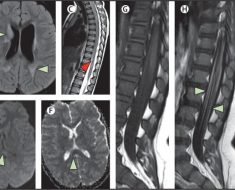Younger women are getting lung cancer more often than younger men. Experts say cigarette smoking is a major reason, but it’s not the only one.

Overall, rates of lung cancer have fallen over the past two decades.
That’s the positive news.
And it’s true for men and women aged 30 to 54, regardless of race or ethnic group.
But younger women — previously at lower risk — are now at greater risk of getting lung cancer than younger men.
This analysis comes from a collaborative study between the American Cancer Society and the National Cancer Institute.
The researchers looked at incidences of lung cancer according to sex, race or ethnicity, and age. They included people born from 1945 to 1980 and those diagnosed from 1995 to 2014.
The researchers also examined the prevalence of cigarette smoking from 1970 to 2016.
The researchers found that white and Hispanic women born since the mid-1960s have higher rates of lung cancer than men in that age group.
“While prevalence of smoking among men and women has converged over the past several decades, smoking prevalence among women has still generally not exceeded that of men,” said Ahmedin Jemal, DVM, PhD, vice president of the Surveillance and Health Services Research Program at the American Cancer Society, in a press release.
“We do not believe sex differences in smoking behavior explain our finding of a gender crossover. For example: the crossover also occurred among Hispanics, even though smoking continues to be less common in young Hispanic women than young Hispanic men,” he added.
The study authors say more research is needed to identify reasons for the trend.
For men and women, lung cancer remains the leading cause of cancer deaths in the United States.
Cigarette smoking is a contributing factor
Cigarette smoking is a contributing factor in about 80 percent of lung cancer deaths each year.
People still smoke. But efforts to get people to quit smoking, or not start at all, have had an impact.
Dr. Robert McKenna Jr. is a thoracic surgeon at Providence Saint John’s Health Center in California.
He told Healthline that California has been ahead of the rest of the country in fighting cigarette use.
“It’s shown a significant decrease in incidence of lung cancer in California compared to other states,” he said.
McKenna suggested that when it comes to lung cancer, the most important thing by far is reducing the use of cigarettes.
In past generations, women were much less likely to smoke. Those who did tended to start later and smoke less.
That’s no longer the case.
Smoking behaviors in women born since 1965 have been closer to that of their male counterparts. But they’re still not smoking more than men.
Study authors point out that the health hazards of cigarette smoking might be different in men and women.
Other contributing factors
Cigarettes aren’t the only way to get lung cancer.
McKenna said smog is another factor.
“California did a good job reducing smog and further reducing the incidence of lung cancer in the state,” he added.
Marijuana use may also play a role.
McKenna said it took some time to get longer term follow-up studies on marijuana smoking.
“A joint a day for a year increases the risk of lung cancer by 8 percent. That’s for each year you smoke a joint a day. It’s really important to get that message out,” said McKenna.
Exposure to secondhand smoke, radon gas, and other toxic substances also raises the risk of lung cancer.
As for the increasingly popular trend of vaping, McKenna said it’s too early to know its role in lung cancer.
“It will be a couple of decades before we really see the true incidence and the impact that will have. It can’t possibly be good for you. It’s not good to inhale toxins into your lungs,” he advised.
Race, ethnicity, and genetics
McKenna mentioned other differences, including race, ethnicity, and genetics.
He noted that in Los Angeles, Latinos have a much lower incidence than whites and African Americans, though it’s not clear why.
“Population sectors that are underserved and have less healthcare tend to have higher stage lung cancer at diagnosis. African Americans are underserved and their lung cancer tends to get diagnosed at a higher stage,” said McKenna.
He explained that genetics may also affect how we respond to smoking.
“Smoking rates in the United States and Japan are about the same. Incidence of emphysema from smoking is the same. But lung cancer in Japan is significantly less than in the United States,” said McKenna.
“They tend to get more of the low-grade adenocarcinoma early stage of lung cancer in Japan. It’s very curable compared to the later stage of lung cancer we see here,” he said.
McKenna said that adenocarcinoma is the most common type of lung cancer.
“What I see is that women get that a little bit more. They also tend to get the type that has a certain marker and is not associated with smoking as much as men’s lung cancer is associated with smoking,” he said.
Anyone can get lung cancer
Sometimes, the reason someone develops lung cancer isn’t clear.
Amanda Nerstad is part of the younger female demographic highlighted in the study.
She has stage 4 non-small cell adenocarcinoma lung cancer.
Nerstad has never smoked or lived with a smoker. There’s no family history of cancer, either.
Some chest pressure and a bout of shortness of breath in the fall of 2016 led the Tennessee resident to a walk-in clinic.
That turned into a 10-day hospital stay and a series of tests.
She was 39 years old when she received the news.
“They told me that I had about two weeks to nine months to live,” Nerstad told Healthline.
“Being diagnosed with stage 4 lung cancer came as a complete shock to my family and me. I never thought this would happen to me. After being diagnosed, I realized that anyone with lungs can get lung cancer,” she said.
Genetic testing revealed that her cancer was ALK-positive.
ALK-positive non-small cell adenocarcinoma lung cancer is most often seen in nonsmokers or light smokers.
“It was like winning the lottery. I felt like the luckiest unlucky person out there,” said Nerstad.
That’s because the genetic marker made her a candidate for a targeted therapy called Alecensa. She takes the oral drug every day.
Now 40, Nerstad says she’s doing well.
“My most recent scans showed complete metabolic response. I sometimes get really tired, but it’s hard to tell if it’s a side effect of my pills, or just being a mom to two busy girls,” she said.
While fighting for her own life, Nerstad is working to raise funds for research. Her ALK-positive support group just raised $600,000 for three grants for researchers to help find a cure.
“I do my best to stay positive and thank God [for] every day that He gives me, and do my best to enjoy life and make memories with my family,” said Nerstad.
Source: Read Full Article





